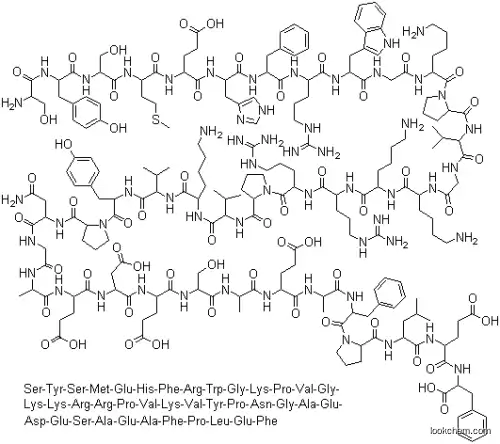Base Information
Edit
- Chemical Name:Corticotropin
- CAS No.:9002-60-2
- Deprecated CAS:11002-79-2
- Molecular Formula:C207H308N56O58S
- Molecular Weight:4541.07
- Hs Code.:2937190000
- European Community (EC) Number:232-659-7
- NCI Thesaurus Code:C212
- RXCUI:376
- Mol file:9002-60-2.mol

Synonyms:1-39 ACTH;ACTH;ACTH (1-39);Adrenocorticotrophic Hormone;Adrenocorticotropic Hormone;Adrenocorticotropin;Corticotrophin;Corticotrophin (1-39);Corticotropin;Corticotropin (1-39);Hormone, Adrenocorticotrophic;Hormone, Adrenocorticotropic


 Xn
Xn
